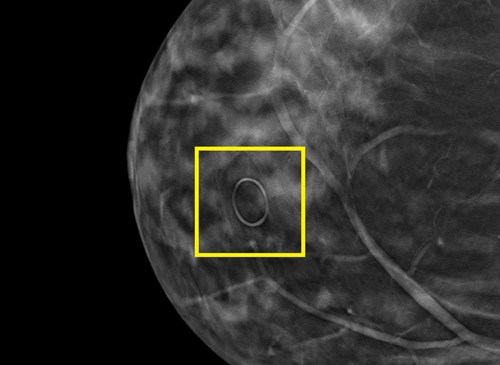Mole Markers Help Eliminate Questions; Reduce Avoidable Callbacks
Using a mole marker easily answers the question, "Is it in the breast or is it on the surface?"
Moles, also referred to as skin lesions, often present an interpretation challenge in breast imaging due to the inconsistency with which they image. A mole may image on one view and not the next or it may be absent on the prior year, but image on the current mammogram, and this causes questions as moles can sometimes be confused with intraparenchymal masses. It's not unusual for patients undergoing screening mammography to be called back for additional imaging due to an unmarked mole. The American College of Radiology (ACR) recommends that breast imaging facilities "should require consistent use of radiographically distinct markers to indicate palpable areas of concern, skin lesions, and surgical scars."
The consistent use of mole markers in mammography helps to lessen the potential for retakes and callbacks:
- Clearly signal that the soft density highlighted by the ring corresponds to an identified mole on the skin as some moles may localize to deeper slices on Digital Breast Tomosynthesis
- Correctly identifies the accurate position of anterior moles, which on larger breasts, can seem to vary greatly from year to year due to positioning
- Provide clear and permanent documentation on the patient's images for year-to-year comparison and when images are transferred to another location

A proactive routine skin marking protocol in mammography
- Aligns with current ACR recommendations
- Reduces risk of false negatives and false positives.
- Reduces unnecessary additional views and callbacks
- Provides visual documentation of breast anatomy from year to year and when transferring images

The MED Tech AS Skin Marking System for Mammography - Booklet
DownloadBreast Cancer Awareness Poster - Every Breast is Unique, Like a Fingerprint
DownloadThe 5 Shape Skin Marking System for Mammography - Mini Poster
DownloadTomosynthesis and Skin Markers, Why Marking Remains a Best Practice in Advanced Breast Imaging
Download